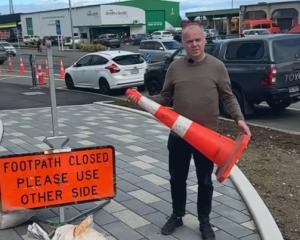
If buses were included in city council planning and road management then the mobility, comfort and safety of all the travelling public, whether private motorists, cyclists, walkers or bus travellers, could be looked after by the same team in the one organisation.
It is easy to see the advantage of this.
In the recent local body elections, mayoral and city council candidates promoted their positive support of bus transport. Shortly before the election, the previous city council voted to take control of the bus network.
Meanwhile, one regional councillor has expressed a wish that his council relinquish the bus service as he is sick of talking about bus timetables.
But how capable is the city council of running a bus service? One indication of this is how good it is at running the bit it is already responsible for: bus stops.
Every day, Dunedin bus drivers and passengers have to put up with the city’s poor-quality bus stops. The trouble started about 30 years ago, when some of the bus companies experimented with smaller buses. The council roading staff were then quick to gain extra parking spaces for cars by making the bus stops smaller, but as bigger buses have returned, the council isn’t making the stops bigger again.
City council managers have been coming along to our health and safety meetings. They have agreed there is a problem; they even fixed a few bus stops.
But at the present rate it is going to take a while to get around the 1000 or so stops of the whole network. In the meantime, the drivers watch elderly passengers wince or groan in pain as they step into a bus that can’t pull in to the kerb. In the meantime drivers receive threatening and abusive gestures from angry motorists as we park with half a bus in the stop with the other end blocking the traffic.
One of our union’s key requests has been that when a bus stop is removed due to road sealing, that when it is put back it is to the highest safety for all users. Green Island recently had its main street completely rebuilt. In the design for the work, there was no provision to make the bus stop the correct size.
Then when the work was finished, this omission was overlooked a second time. It took the council six days to respond, which it did only after drivers threatened to cease serving the stop. Even now it has only been fixed temporarily, with still not enough room to let elderly or disabled people get off the bus easily and safely. All this is costing the ratepayers too much to go back and fix what should have been done correctly the first time.
If the Dunedin City Council is looking at taking over the management of Dunedin’s bus service, it needs to show it is capable of providing a safety-focused, people-focused, accessible bus service. Let’s start by working with the bus stops. If the council can do that right, only then should it be allowed greater control of the public transport system.
- Philip Matthews is the secretary of the Dunedin branch of the New Zealand Tramways Union.










